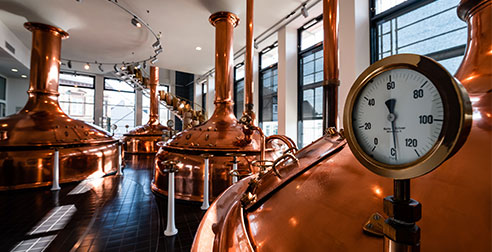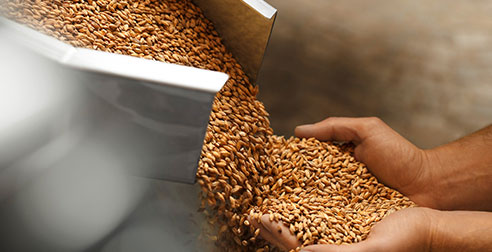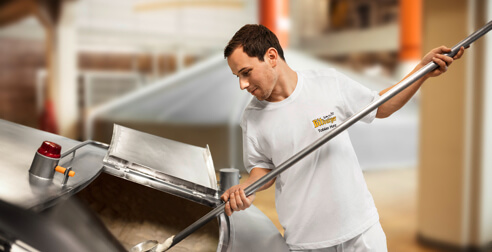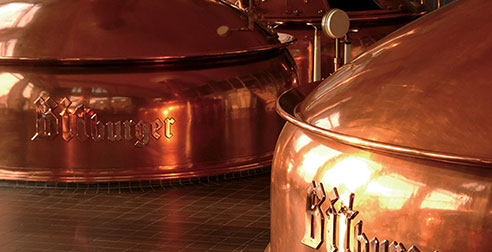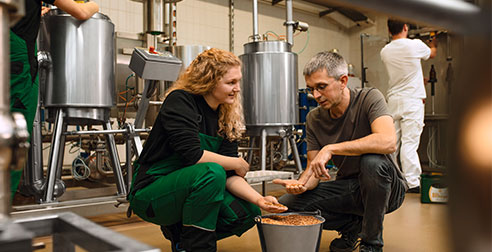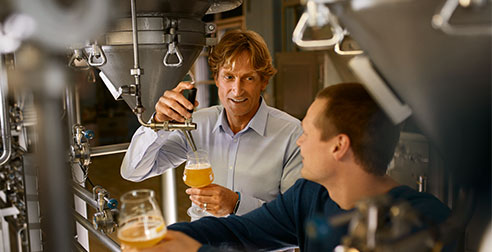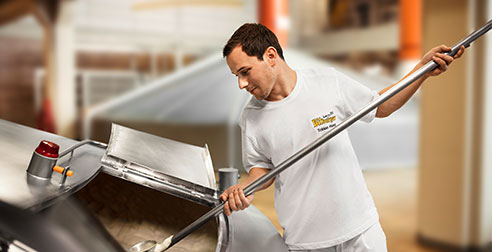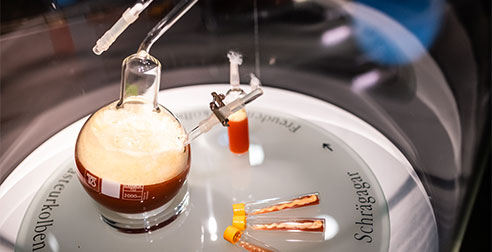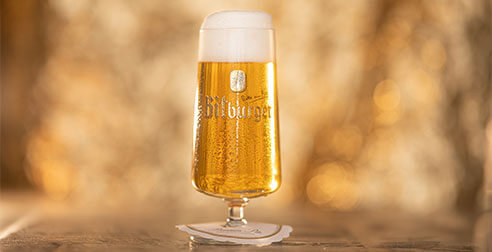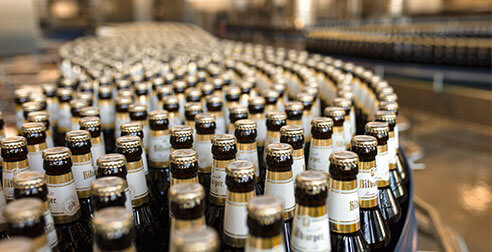Bitburger’s Brewing Process
The German Beer Purity Laws of 1516 are now 500 years old. These laws stipulate the ingredients to be used for brewing beer in Germany. The four main ingredients for beer are well-known: hops, malt, yeast and water. It’s where these ingredients come from though, and how they are brought together in the process of brewing, that has earned our beer the name Premium Pils.
Our Malt Determines the Character of Our Beer
The process starts with our barley being malted at our partner malthouses, and the resulting malt is delivered here. Milling leaves the malted barley in fragments of various sizes, but leaves its husks largely intact. This releases the precious insides of the grain, without grinding the husks of the malt too finely. The husk of the barley grain needs to be preserved, as these will act as a natural filter at a later stage of the brewing process. The style of beer is largely determined by the malt: the colour, the taste, and its overall character.
Next Up: It’s Time for Mashing
The milled malt is gradually heated with water in a so-called ‘mash tun’. The natural enzymes in the malted barley grains convert water-insoluble starch into soluble maltose sugar. Hours later, after yeast is added, this sugar will be converted into alcohol and carbon dioxide during fermentation. Depending on the consistency and texture of the malt, the temperature levels and rest stages will need to be different. This means that seasonal fluctuations in the properties of our ingredients can be balanced out, which helps to produce a consistent quality of beer. Part of the mash is heated in a mash tun to fine-tune the flavour, colour and level of sweetness.
Into the Lautering Tun
At the next step of the brewing process, the mash is transferred into a ‘lautering tun’. The grain husks help to separate the wort – the liquid part of the mash – from the smaller solids leftover from mashing the grain. The solids sink to the bottom of the tun, which has a false bottom with thin slits that act as a strainer/sieve. The solids collect on this strainer to form an additional natural filter layer. The wort is strained through this filter layer, and when it emerges out of the bottom of the tun it is a clear liquid. In the next step, called ‘boiling’, hot water is added to the grains to wash out any precious ingredients that are still left inside, and release any residual sugar into the wort.
EVERY YEAR WE PRODUCE 70,000 TONNES
OF CATTLE FEED AS A BY-PRODUCT.
Clarify & Cool
The resulting wort is added to a boiling pan, which sterilises the liquid and evaporates base aromas. It’s now also time to add our hops, as high temperatures are needed to extract their bittering flavour and aroma. The more hops are added, the drier and bitterer the beer will taste. After the flavour has been extracted from the hops, it’s time for what we call the ‘whirlpool’. The debris and solids left after the boiling stage are called the ‘trub’. The rapid rotation in the whirlpool tank forces these dense solids to stack up in a cone-shape in the middle of the tank, leaving the wort separate and easy to remove from the outer edges.
Fermentation – Time for Our Little Diva to Shine
The hot wort is first cooled down in a chiller. Next it’s time for the fermentation tank, and for our yeast to be added. We affectionately call our yeast a ‘little diva’ because of its temperamental behaviour! Yeast converts the maltose sugar in the wort into alcohol and carbon dioxide.
The main fermentation process lasts around seven days, and is followed by an equally long aging and cold conditioning (‘lagering’) period. Higher temperatures would speed up the fermentation process, but the Bitburger brewery deliberately avoids this, because it can produce unwanted by-products. We prefer to let our yeast take its time to do its job. This ensures that the intermediate product that we get as a result, a fresh ‘young beer’, meets our commitments to premium quality.
Cold Conditioning – Time for a Little Peace and Quiet
After fermentation and aging, we leave the beer to ‘lager’ (in English ‘matured‘) at lower temperatures. This gives our beer some time to rest. The Bitburger brewery has four lager cellars housing 168 tanks. These tanks can hold up to 3,700 hectolitres at full capacity. It is very cold in here, and there are a lot of pipelines leading from tank to tank.
For the best results, we use a two-tank approach: the beer will spend 14 days fermenting and aging in the first tank, and then another 14 days lagering in the second tank down in our cellars. This is amble time for the beer to settle and stabilise.
Filtering Makes for a Clearer Beer
Before the lagered beer is ready for bottling, it is filtered once more to stabilise the flavour. First, the unfiltered beer enters into candle filters where the last traces of yeast and the ‘trub’ are removed using a powder called ‘diatomaceous earth’ (sometimes called ‘kieselguhr’ as well). The candle filter is a cylindrical metal container, and the filtered beer comes out of the top.
Instead of using pasteurisation to purify the beer, which uses heat, Bitburger brewery uses this layered filter tank instead. In this method, the beer is slowly pressed through layers of cellulose until it is completely pure.
Ready for Bottle, Can or Keg
Since the first stage of milling the malt, around four to six weeks have passed and the beer is now ready to go into a bottle, a can or keg. After checking that the individual bottles, cans and kegs are clean and intact, they are filled with beer.
The final step in our beer’s journey is distribution. Every day, around 160 trucks are loaded and unloaded at ten loading lanes, with each truck taking only about 35 minutes to load. Around 1.6 million litres of Bitburger leave our brewery every day. That’s around 700 million bottles and over two million kegs each year.
